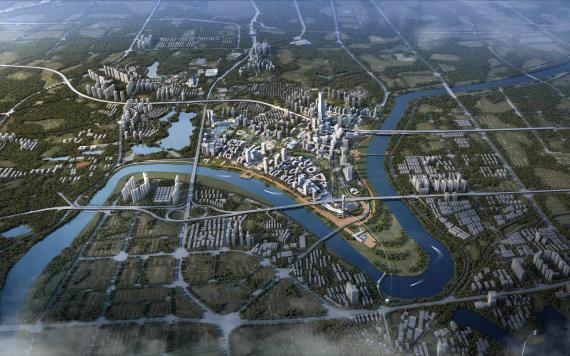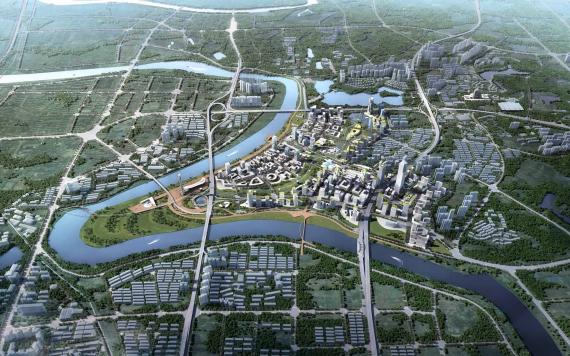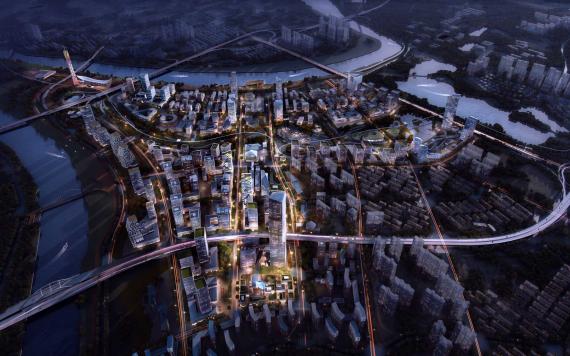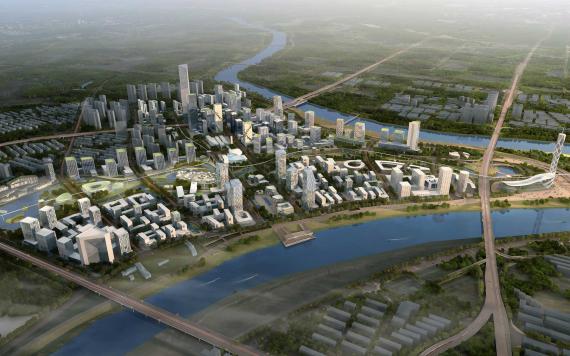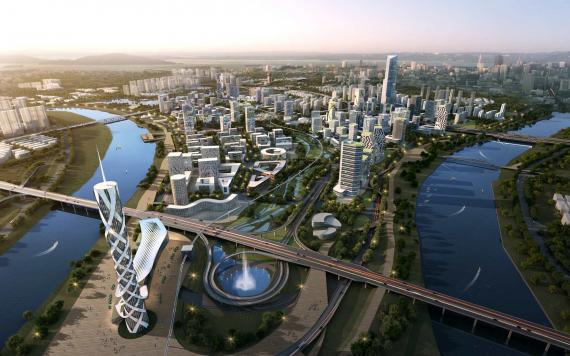Bid Winning for Changsha Malanshan Vision Park
Malanshan Vision Park is the only remaining undeveloped land in the city and is also regarded as the engine of Changsha’s future economic development. New media is one of the leading industries that Changsha and Hunan Province especially cultivated. Thanks to the predominant position of Hunan TV, innovative content of culture, communication technology, tourism and video technology will be gathered in the industrial park and develop into a world-class media bay.
On the basis of in-depth research on the form and successful experience of the world media industry gathering area, we deeply studied the industrial chain and the development of the population industry, and built a specific urban spatial carrier for the specific crowd.
We deeply studied the land use features. Our design corresponds to the surrounding environment. The axis of the city is closely linked with the city rail transit station area of cultural industry fathering. In the beautiful landscape of the riverside is a media and technology related industrial area. The planning structure of the three districts with one axis is formed with continuous implementation, which provides a good development framework for urban design.
The nature of the planning land is flexible and can be developed with high density. The function related to the industrial theme is combined with the urban public space, and the functional mix in the block is carried out on the basis of the zoning. Innovative research and development unit is proposed with high sharing and multiple functions.
The concept of ecological infrastructure is brought forward. On the basis of delineating the ecological red line, we designed a city-level public green belt running through the north to the south according to the planning principles of sponge city which conforms to the natural topography and hydrological conditions. The interior landscape system of the land is connected with the riverside landscape belt and the tourist facilities through the large landscape platform, which constitutes the complete ninth Channel Bay landscape system of the Liuyang River.
In the design, the riverside skyline, the urban street interface and the city axis are emphasized. The central axis and the park are integrated with public buildings and public spaces to realize the unified coordination of public space and the large active site of the city. The undulating and graceful riverside skyline identifies the city interface. The landmark media center building and the sightseeing tower are the best places to look at the surrounding scenery.
The traffic system applies public transportation orientated design principle. Two horizontal and two vertical express roads are planned. External interface is set at the secondary main road. Internal road network is set with uniform density in narrow road net mode. Such grid traffic network is easy to identify. A reasonable and concise interface is designed at the entrance and the exit of the park. The bus line connects the layout of the rail traffic and puts forward the light rail system that runs through the park, and assumes more than 90% of the park's traffic.
